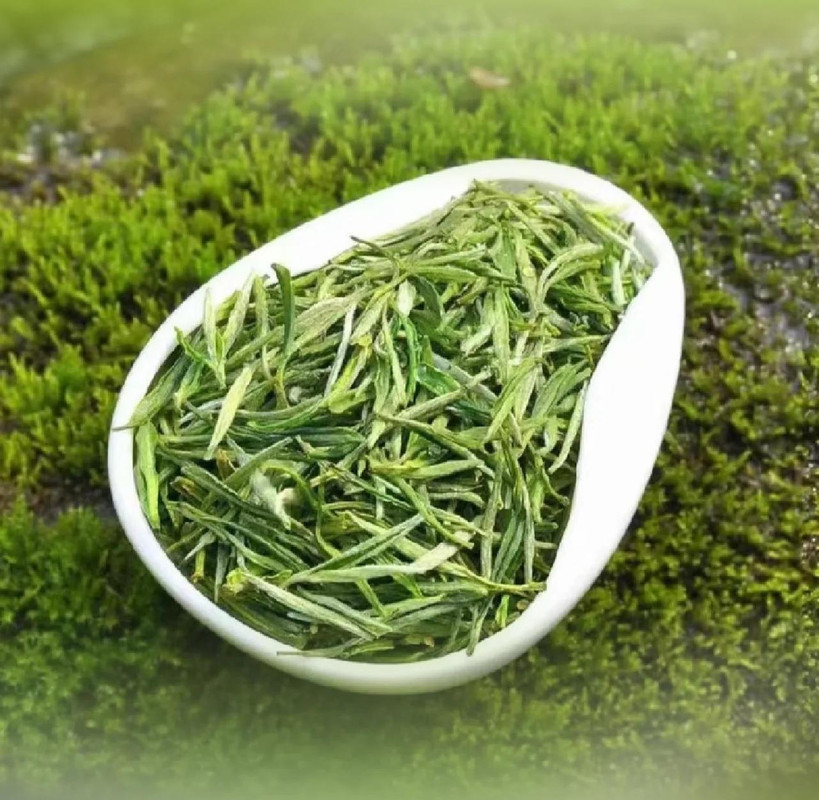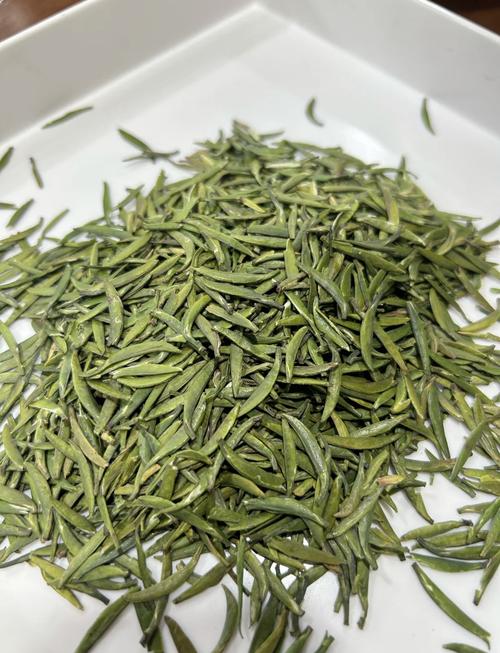Nestled in the mist-clad mountains of Jixi County, Anhui Province, China, emerges a gem of green tea—Jinshan Shiyu. Revered for its exquisite flavor and storied heritage, this tea embodies the harmony between nature’s bounty and human artistry. Let us explore its essence through the lens of history, craftsmanship, and cultural significance.

Origins and Historical Tapestry
Born in the late Qing Dynasty (19th century), Jinshan Shiyu traces its roots to the village of Jinshan, nestled in the upper reaches of the Yangtze River. Legend has it that local tea masters, inspired by the region’s lush terrain and temperate climate, refined ancient techniques to create a tea that mirrored the area’s tranquility. The name Shiyu translates to “timely rain,” a metaphor for the tea’s ability to revitalize the spirit, much like a gentle spring shower.
Terroir: The Cradle of Flavor
Grown at altitudes of 500–800 meters, the tea bushes thrive in Jinshan’s unique microclimate. The soil, a fertile blend of red-yellow loam, is enriched by mineral deposits from surrounding granite formations. Frequent fog and differential day-night temperatures slow the growth of tea leaves, allowing them to accumulate rich amino acids and aromatic compounds—a geological gift that defines the tea’s brisk, floral character.
Craftsmanship: From Leaf to Legacy
The creation of Jinshan Shiyu is a dance of precision and patience:
- Plucking: Only the tender bud and one adjacent leaf are harvested, typically in early spring.
- Withering: Leaves are spread on bamboo trays under natural sunlight to reduce moisture gently.
- Fixation (Killing Green): Pan-fried in woks at 200–220°C to halt oxidation, preserving the grassy freshness.
- Rolling: Hands or machines shape the leaves into tight, spiraled curls, releasing essential oils.
- Drying: Final roasting at low heat ensures moisture content drops to 3–5%, locking in fragrance.
Aesthetic and Sensory Profile
The dry leaves resemble emerald needles, their surface glistening with a delicate down. Upon infusion, the liquor transforms into a luminous jade-green, exuding orchid-like aromas with hints of chestnut. The taste is crisp yet mellow, leaving a lingering sweetness akin to fresh bamboo shoots—a testament to its terroir.
Brewing Rituals
To savor Jinshan Shiyu:
- Water: Use soft, spring water heated to 80–85°C (176–185°F).
- Ratio: 3 grams of tea per 150 ml of water.
- Vessel: Opt for a glass cup or porcelain gaiwan to admire the unfurling leaves.
- Infusion: First steep for 1–2 minutes; extend subsequent brews by 30 seconds.
Discerning Quality
Authentic Jinshan Shiyu is distinguished by:
- Appearance: Uniform, needle-like leaves with silvery tips.
- Aroma: Fresh, orchid-like fragrance without mustiness.
- Liquor: Bright, clear jade hue.
- Infused Leaves: Vibrant green, plump, and intact.
Grading and Pricing
Graded into Special, Premium, and Standard tiers based on leaf uniformity, pluck standard, and craftsmanship. Special-grade tea, harvested pre-Qingming Festival, commands 50–150 per 100 grams, while Standard grades range from 20–50. Vintage rarities or limited editions may exceed these brackets.
Healthful Virtues
Rich in polyphenols and catechins, Jinshan Shiyu is celebrated for:
- Antioxidant properties that combat free radicals.
- Metabolism boost from natural caffeine and L-theanine.
- Digestive aid and stress relief through its calming yet invigorating effects.
Cultural Resonance
Beyond its cup, Jinshan Shiyu weaves into local folklore and rituals. During the Qingming Festival, families offer it as a gesture of respect to ancestors, while poets have immortalized its elegance in verse. Today, it remains a symbol of Anhui’s tea heritage, bridging tradition and modernity.
In every sip of Jinshan Shiyu, one tastes not merely tea, but the whispers of mountains, the patience of artisans, and the timeless rhythm of China’s tea culture.



